Annie Leonard and her “The Story of Stuff”. It raises issues that go beyond pollution and recycling; it addresses complex relationships at the intersection of feminism and environmentalism. At this moment, both feminism and environmentalism are at interesting points in their histories. Both movements are more than thirty years past their contemporary emergence and are experiencing a combination of growth and retrenchment, diversification and solidification.
For both movements, issues of sexism, racism, classism, neocolonialism, and heterosexism have unevenly and persistently challenged mainstream versions of activism, policy making, and theory building. There has also been increasing attention paid to the possible intersections between the two movements. What does feminism have to offer environmentalism, and vice-versa? How does bridging these internally diverse movements in dialogue and alliance require us to transform our usual ways of conceptualizing nature, politics, gender, race, and class. What kinds of theory will assist new activism in feminist environmentalist arenas?

"An early worshipper at Nature's shrine, I loved her rudest scenes--warrens, and heaths, And yellow commons, and birch-shaded hollows, And hedge rows, bordering unfrequented lanes . . ." Charlotte Smith
Much work on these issues has been done under the name “ecofeminism.” But, ecofeminism has been plagued by the racism and classism of many white ecofeminists, as well as by internal conflicts over the place of feminist spirituality within ecofeminist activism and theory. Also, ecofeminism has been burdened with the assumption that it is always essentialist, seeing women as somehow inherently closer to nature, increasing its failure to analyze the interaction of racism and classism with sexism and “naturism.”‘
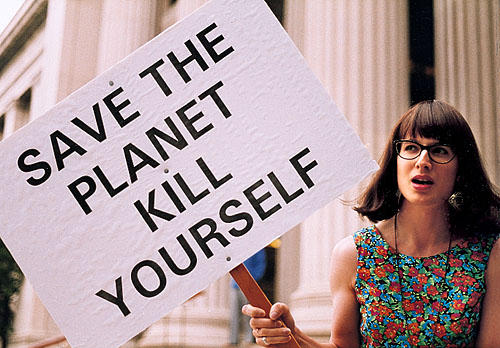
'And what I have to overcome is that poison cruelty that seems almost inherent in people. The same that prompted Jean-Paul Sartre to say that hell is other people. It's not inborn; it's learned. And it gets passed down through generations. Each one gets beaten by the previous one until it bears the identical scars. Then it turns on the next and starts beating on them until they, too, bear those scars... So when I read the obscene self-justifications that some people go through, presenting themselves, the bullies, as the poor little victims of a nasty, gay revolution--well, why not just wave a red cape in front of me and every other excluded kid? I mean, it's not as if you're not just asking to get your sorry asses kicked, is it now?"
In addition, ecofeminism is a term that covers very different positions and arguments, and by no means are all of them essentialist in these ways. Essentialism in ecofeminism often arises strategically in moments of resistance to various hegemonic discourses and practices that exclude women from environmentalist movements, or in arguments that intend to convince feminists of the necessity of including environmentalist analyses in their scholarship and their political practice. Essentialism can be partially avoided by concentrating on connecting feminisms and environmentalisms, as political practices and theories, rather than trying to connect “women” and “nature. …

To Beuys, ‘Social Sculpture’ based upon interactive dialogue had the potential to be transformative and healing. In the action ‘ I Like America And America Likes Me’, Beuys shared living quarters with a live coyote for five days in the Rene Block Gallery in New York. He often used animals to teach the lessons of social ecology -”the cultural characteristics and patterns of social organisation that have brought about the current ecological crisis” -and ecofeminism- how the domination of man over the natural world reproduces his domination in society, leading to mutually catastrophic destruction.
Annie Leonard. She is a self described neurotic.Her daughter said the only place they have ever gone shopping is in a garage. Who wouldn’t be slightly anxious if you carried around in your head an encyclopedia of knowledge about the dangerous truth of consumerist culture.Its about the civilization of garbage and trash as an institution. All this led her to make a twenty minute film, ”The Story of Stuff”, that went viral wild in 2007 which resulted, in turn, to a book of the same title. She knows about all the hidden stories behind the goods we buy and the destruction they cause. This culture of accumulation of ”things” has propelled her into a life of unravelling the interconnections of the consumer economy, working for a variety of non-profit groups, among them Greenpeace.
”I give thanks before you, god, that you have placed my portion amongst those who study at the religious academy and you have not placed my portion amongst those who do business in the market, for i arise early and they arise early – I arise for words of torah and they arise for words of futility; I toil and they toil – I toil and receive reward while they toil and do not receive reward; I hasten and they hasten – I hasten to the world-to-come and they hasten to the depths of hell.” r. nehunya ben hakana (1 century a.d.) from Hune-Martin Buber Dialogical-Ecology.

". She fastened it high and bouncy, like a cartoon coed. That, plus a crumpled list in her hand and a Valley Girl lilt, was apparently all she needed to get into the dumps, ports, and factories she was investigating on behalf of her then-employer, Greenpeace. Where were Los Angeles’ recyclable plastics ending up? Who was dismantling our toxics-laced computers? “I’m pledging into a sorority?” Leonard would say, “and I need to find these things for a scavenger hunt?” In a pre-9/11 world, the tactic nearly always worked. “They never thought this dumb girl could do them any harm,” she says."
For many years, this has been a message that has fallen on deaf ears. She was viewed as a fanatic, an eco-radical that seemed to intense, wonky and technical; esoteric subjects such as Thor chemicals and mercury exposure overwhelmed the non-converted and preaching to the choir only stoked the fires of activism. The idea behind all the science and overwhelming evidence was simple: Our relationship to materials and by extension the materialistic impulse. Yet it all makes sense. Tha
nsumption and passive entertainment from television erode engagement with the community.“You can only compromise to a point before a solution isn’t really a solution….Industrial polluters will get the vast majo of these valuable permits for free. Free! The more they are polluting, they more they get. It’s like we’re thanking them for creating this problem in the first place…The danger with offsets is that it’s very hard to guarantee that real carbon is being removed to create the permit, yet these permits are worth real money, This creates a very dangerous incentive to create false offsets—to cheat. Now in some cases cheating isn’t the end of the world. In this case, it is….Leonard says carbon trading will be run by the likes of Goldman Sachs and Enron, the people who gave us the dot-com bubble and the subprime mortgage crisis. (Somehow Bernie Madoff’s name comes up as well.) She doesn’t like markets or big business, clearly.” ( Annie Leonard )

In 1987, the Alternative Nobel Prize, awarded "for vision and work contributing to making life more whole, healing our planet and uplifting humanity", was given to the women of the Chipko movement. Organized by the will to protect forests being threatened in India in the early 1970s, the village women that made up Chipko put their lives on the line for the earth. That same year, the Nobel Prize for economics was given to Robert Solow of MIT for his startling theory that, "the world can, in effect, get along without natural resources, so exhaustion is just an event, not a catastrophe"
Yes clearly. The tea party crowd, and Sarah Palin followers are not amused. Her critique is not much different than that of Michael Moore in ”Capitalism: A Love Store” or the film ”The Corporation”. That is, the environmental issue goes to the heart of the tentacled monster of our best known multi-nationals.The all powerful profit motive. Leonard is scratching at the underbelly of the capitalist beast as it rolls out of bed and onto the lives of many who suffer, but are hidden from view. What she calls the so called ”hidden cost” of what we purchase. The uncanny point, is that what she says is entirely accurate; the pollution issue is almost secondary to the pollution of human spirit .

"The public, after all, tends to be mangled between the opposing perspectives of science and feminism, fact and metaphor, technology and politics. If ecofeminism stands to bridge the gap between the two, it may also provide a third perspective through which the public can assess environmental issues. This perspective includes elements of science and the issue of world development but is particularly female sensitive. Ecofeminism, however, is not without its own opposing forces; within the general movement are the two distinct entities of liberal ecofeminism and cultural ecofeminism. Liberal ecofeminists feel that women are excluded, through their education and career opportunities, from the political, scientific, and social reforms necessary to curb environmental degradation..."
“The possibility exists within the ecofeminist movement, of addressing ecological problems in a way that satisfies science’s obsession with fact as well as feminism’s hunger for social justice. Ecological problems arise from the destructive interplay of social institutions, such as the economy, politics, technology and population pressure, with nature. Science tends to be more familiar with the processes and resources that exists within nature. These resources are then valued within the framework of social institutions such as the economy, international markets, and technological progress.
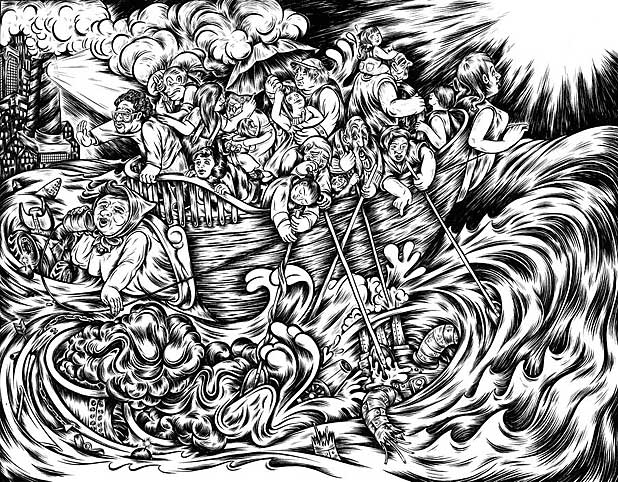
" Among the most provocative criticisms covered is the suggestion that radical environmentalism, including ecofeminism, threatens environmental protection and preservation by potentially alienating the public and protesting technology and reforms that are beneficial"
Feminism, on the other hand, addresses social issues and their effect on women, often using the metaphor of male domination. Within the many branches of ecofeminism there is a balance between viewing the world purely in terms of observed fact or as a metaphor. Through the lens of ecofeminism, both scientific and feminist issues can be brought to bear on issues in world development. Considering the power of the western world in international politics and policy, the potential for ecofeminism to balance the influence of science and technology with the socially sensitive perspective of feminism may be of extreme significance.” ( Abigail Johnson )
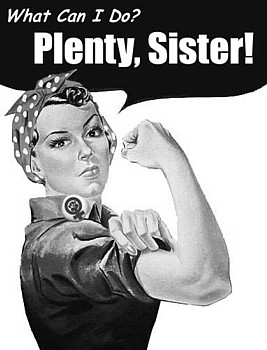
" Critical to cultural ecofeminism is the distinction between genders and their connection to the earth; women are more connected to nature than men. The emphasis on the feminine is a result of the perceived oppression of women and nature by science. Although the feminine is stressed in ecofeminism, it ultimately seeks science, technology, and policy that is not gendered. A holistic view of nature and humans is appealing, especially in the face of current environmental degradation. Ecofeminism has not replaced the paradigm of patriarchal science in spite of this appeal. Martin Lewis points to several weaknesses in the radical ecology movement, of which ecofeminism is a branch, in his bookGreen Delusions"
As the earth’s easily available resources are used up, our industrial order is nearing a point of no return. As Leonard has pointed out, like the amphibians and reptiles before us, are continued prosperity is not assured by nature.Our dependence on fossil fuels that drive our machines, is so deep seated that a transition to other energy forms, as we witness, will be highly traumatic, expensive, and our preparation for a destruction of our industrial network, should diaster strike, may leave us unprepared and unable to ever again lift ourselves above an agrarian level of existence. Each decade sees increasing production requiring more non-renewable material and eventually the process of depletion continues until there are far less and more difficult to access. The environmental movement is essentially about making this transition into more complex and highly integrated industries.
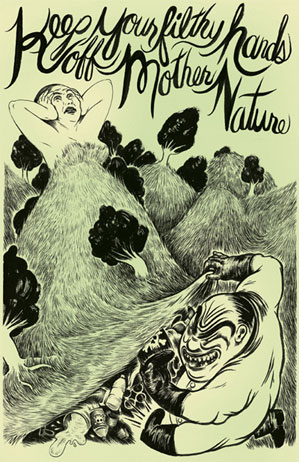
Cultural ecofeminism is specifically targeted as threatening the future contributions of women to environmental reform by spurning science. If women are no longer involved in science and technology, patriarchy will be perpetuated
“Lynne Hull’s work with what she calls “trans-species” art provocatively presents a thoroughly socially constructed “nature,” but one that counts nature as a equal partner with the artist, undermining the centuries-old Western assumption that the total conquest of nature is the only interaction desirable. Susan Kollin also is concerned with discourses of conquest, in this case those of white women travelers in Alaska in the late nineteenth and early twentieth centuries. Kollin argues that rather than figures of automatic resistance to white male imperialism, these travelers and writers were able to use their racial privilege as well as notions of connections between women and nature to insert themselves into masculinist discourses of travel and colonialism.” …
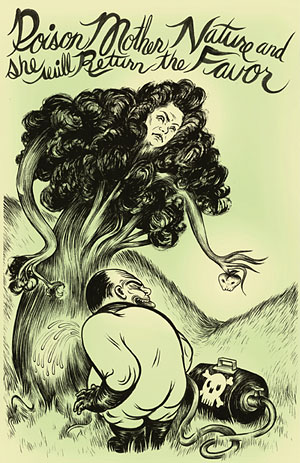
By identifying modern science and technology as the enemy of the environment and, in extreme arguments, women, ecofeminism makes solutions to environmental problem difficult. The suggestions made by ecoradicals that society focus on interconnectedness are criticized by Lewis as "unreasonable" and based on "outdated ideas and enthusiasm and questionable scholarship"
Similarly concerned with colonialism and racism, Rosanne Kanhai’s story about the way racism figures people of color, especially children, as natural resources for white people also presents alternative ways of seeing nature as a refuge from racism. Catriona Sandilands examines a Canadian story about a woman’s relationship with a bear as an example of another alternative way of figuring nature, as a metaphor for “wild democracy.” Rose Gonnella’s art, which follows, presents domestic, feminized space in surreal and transformative relation to the outside, the natural. Ann Filemyr is similarly concerned with interrogating the division between inside and outside as a tool of racism, sexism, classism, and heterosexism. Her personal, complex narrative demonstrates the important point that, contrary to mainstream environmentalist concepts, the “outside” is not necessarily a realm of freedom for everyone. Also transgressing set divisions between nature and culture, Shi Hui’s sculptures of recycled paper reconstruct the boundaries between domestic objects and natural forms, finding grace and softness in strong patterns.
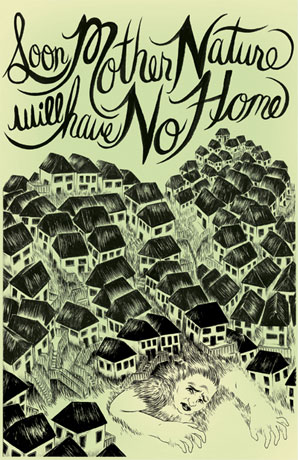
The criticisms posed by authors like Lewis take our current economy, scientific approach, and technological advances for granted. The western world from which these originate is unequivocally the economic and political leader of the international community but is also, according to cultural ecofeminist critics, a patriarchal system whose tenants of domination and exploitation affect every aspect of society, especially women. Science is targeted, in particular, for its propagation of the ideology of asymmetry between men and women, women being the 'other'
Mary Paniccia Carden examines Jane Smiley’s novel A Thousand Acres as a critique of the relation between patriarchy, land owning, and the construction of an American national discourse, one that requires the parallel exploitation and domination of women and nature. Carden points to the ways in which maledominated notions of expertise in farming are implicated in sexual abuse and environmental pollution, constructing histories of”America’s heartland” that obscure the serious costs of these practices. Also examining masculinist forms of knowledge, Giovanna Di Chiro’s work on women environmental activists in the United States and in India shows the way in which their strategies of creating new forms of science practice produce forms of oppositional environmental expertise. …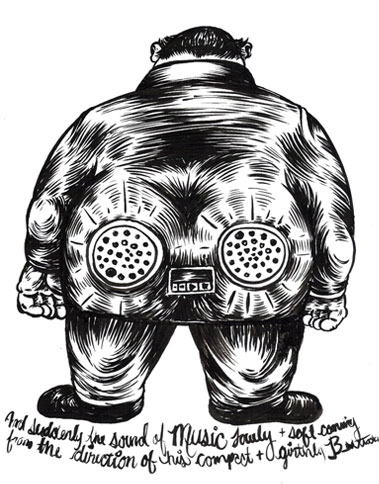
“The patriarchal system opposed by ecofeminists is seen as system based on scientific, technologic, and economic premises that define women and nature as passive, fragmented within itself, separate from man, and as inferior and in need of domination by man . This definition of women and nature has its roots in the scientific ‘knowledge’ of theorists such as Francis Bacon in the sixteenth and seventeenth century. Dichotomies between man and women that already existed were strengthened by the mastery and domination images created by Bacon . Vocabulary alluding to rape and torture mark Bacon’s explanation of nature and mechanisms of science. For example, Bacon claims that inventions of science don’t, “merely exert a gentle guidance over nature’s course; they have the power to conquer and subdue her, to shake her foundations”. Such imagery , as interpreted by ecofeminists and feminists alike, turns science into a source of violence and aggression against women and nature. When science is perceived as aggressive and dominating towards the environment and its ‘feminine’ qualities the technology born out of its experiments and inventions is too.
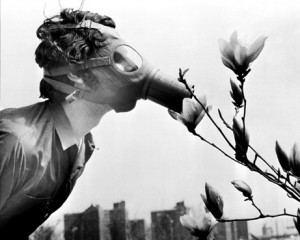
"Ecofeminists believe that the oppression of women (as well as other races and the LGBTQ community) and the oppression of nature are interconnected, and that man’s domination over nature is what led to a patriarchal society. Obviously, the environmental movement would feel a kindred spirit, so to speak, in this ideology and vice versa. "
In response to this scientific system and its contributions to society, ecofeminism proposes alternative view of development, technology, and ecology. By and large ecofeminism focuses on women and communities which bear the brunt of development’s shortcomings . The values of peasant women, who maintain local ecosystems by using their resources to provide for their families, are guidelines for many of the suggestions made by ecofeminists. In her book Fertile Ground, Irene Diamond emphasizes the values of peasant women in India such as “generosity, the repair that often comes with the simple passage of time, local self-reliance, and the power of community solidarity and mutual aid” to define their “politics of renewal”. This is contrasted to modern western ecology which compartmentalizes agriculture, forests, water, animals and humans. Fundamentally, ecofeminism supports science, that is an understanding of the natural world and its processes, but a version of science that is more female friendly and less surgical in its approach to nature. In contrast to the compartmentalized vision of nature in western science which is convenient for a technologically and economically motivated society, ecofeminism seeks a more holistic ecology. ( Abigail Johnson )
a







 COMMENTS
COMMENTS